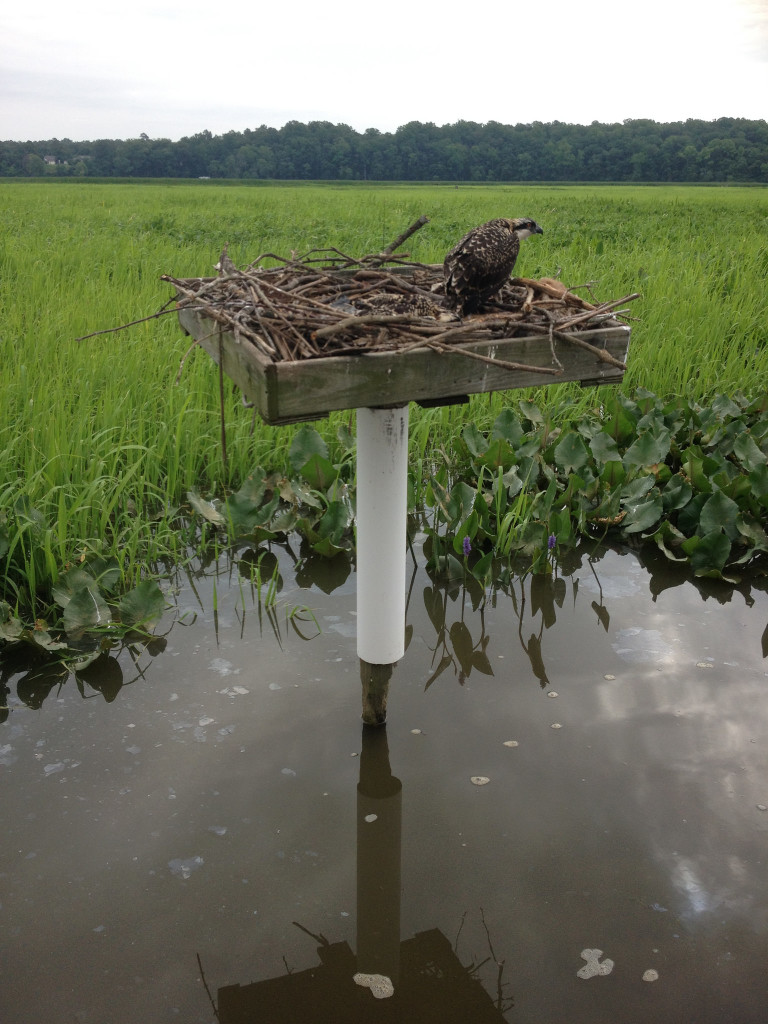
For more pictures from the osprey banding trip check out https://www.flickr.com/photos/beachchairscientist/sets/72157654936373085
Those huge platforms along the causeways are there for a very important reason. Osprey build their nests on them. They’ll also build their nests on any open platform free from predators and near shallow water. But, the man-made platforms have really help to bring back populations of osprey after their sharp decline in numbers due to DDT. Each year the huge raptors, also known as “fish hawks” because 99.9% of their diet is fish, wait until after the water thaws to build a nest. Since the winter was so long this year along the Mid-Atlantic many of the birds just made their nests in March/April. With an incubation period of just over a month and the young needing just about two months before they take off from the nest it was a perfect time to follow along with Greg Kearns of Patuxent River Park in Upper Marlboro, MD, as he banded juvenile osprey (don’t worry, he has a permit for this kind of thing).
Osprey are banded at a young age to help determine their migration patterns, life expectancy, as well as reasons for mortality. The band that is placed on the young is very light weight and has not hindered their ability to catch food. I am incredibly grateful for his time and dedication to his efforts in conservation and education. Thank you for your enthusiasm and sharing your knowledge with the Mid-Atlantic Marine Education Association late last month. Here are some more interesting facts learned along the way:
- As with all birds of prey these birds have very sharp talons. But, the osprey have a reverse talon making it easy for them to grasp their prey with two toes in the front and two from behind.
- The male usually scopes out the spot for the nest to be built several days before the arrival of the female.
- Osprey are asynchronous incubators and do not hatch all at once. The female typically lay four eggs but usually one two survive. While they do share food distributed by their mother the oldest one dominates.
- The hunts for food for the mother and young and before he returns to the nest with food he’ll eat about one-third of the fish. Hunting for fish does burn a lot of calories after all. The mother and young will eat the rest of the fish, but seem to not favor the gut of the fish. The adults generally need about 300 grams of fish per day.
- There is a 40-50% chance of survival for the young. The average age of an osprey is 8-10 years old. The oldest tracked osprey was found to be 33 years old.
- Their nests are made of sticks from the surrounding marsh plants, as well as animal hide or even litter such as plastic bags.
- Young osprey have orange eyes that turn brown as they get older.
If you live near shallow water and want to build a platform there are several plans available here: http://www.osprey-watch.org/
To watch a pair of osprey raising their young during this nesting season from the comfort of your own screen check out the Patuxent River Park’s Osprey Cam here: http://www.pgparks.com/







What people are saying …